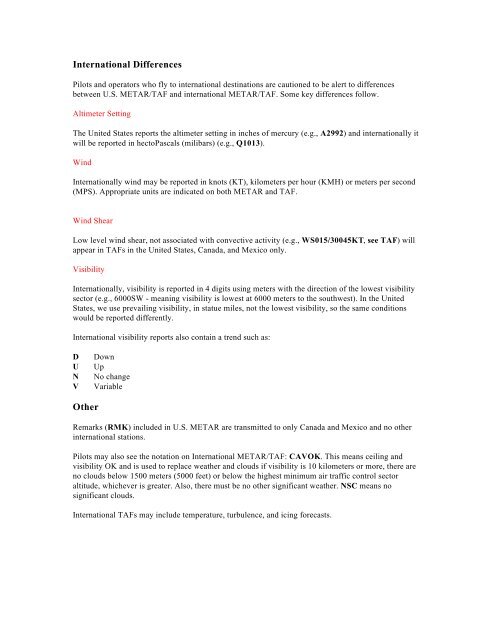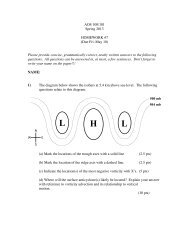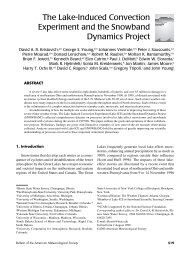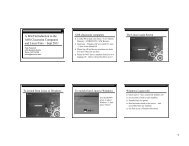New Aviation Weather Formats: METAR/TAF
New Aviation Weather Formats: METAR/TAF
New Aviation Weather Formats: METAR/TAF
You also want an ePaper? Increase the reach of your titles
YUMPU automatically turns print PDFs into web optimized ePapers that Google loves.
International Differences<br />
Pilots and operators who fly to international destinations are cautioned to be alert to differences<br />
between U.S. <strong>METAR</strong>/<strong>TAF</strong> and international <strong>METAR</strong>/<strong>TAF</strong>. Some key differences follow.<br />
Altimeter Setting<br />
The United States reports the altimeter setting in inches of mercury (e.g., A2992) and internationally it<br />
will be reported in hectoPascals (milibars) (e.g., Q1013).<br />
Wind<br />
Internationally wind may be reported in knots (KT), kilometers per hour (KMH) or meters per second<br />
(MPS). Appropriate units are indicated on both <strong>METAR</strong> and <strong>TAF</strong>.<br />
Wind Shear<br />
Low level wind shear, not associated with convective activity (e.g., WS015/30045KT, see <strong>TAF</strong>) will<br />
appear in <strong>TAF</strong>s in the United States, Canada, and Mexico only.<br />
Visibility<br />
Internationally, visibility is reported in 4 digits using meters with the direction of the lowest visibility<br />
sector (e.g., 6000SW - meaning visibility is lowest at 6000 meters to the southwest). In the United<br />
States, we use prevailing visibility, in statue miles, not the lowest visibility, so the same conditions<br />
would be reported differently.<br />
International visibility reports also contain a trend such as:<br />
D<br />
U<br />
N<br />
V<br />
Down<br />
Up<br />
No change<br />
Variable<br />
Other<br />
Remarks (RMK) included in U.S. <strong>METAR</strong> are transmitted to only Canada and Mexico and no other<br />
international stations.<br />
Pilots may also see the notation on International <strong>METAR</strong>/<strong>TAF</strong>: CAVOK. This means ceiling and<br />
visibility OK and is used to replace weather and clouds if visibility is 10 kilometers or more, there are<br />
no clouds below 1500 meters (5000 feet) or below the highest minimum air traffic control sector<br />
altitude, whichever is greater. Also, there must be no other significant weather. NSC means no<br />
significant clouds.<br />
International <strong>TAF</strong>s may include temperature, turbulence, and icing forecasts.





